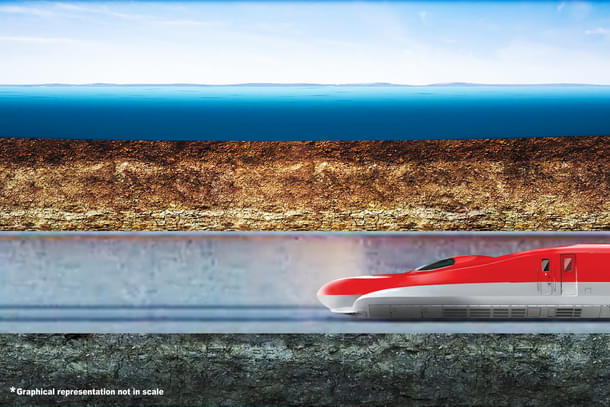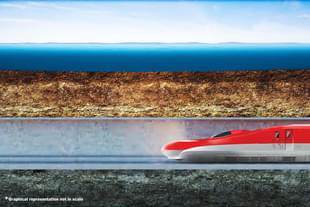Infrastructure
Mumbai-Ahmedabad Bullet Train: NHSRCL Begins Work On India's First Undersea Rail Tunnel
V Bhagya Subhashini
Jul 19, 2024, 04:57 PM | Updated 04:57 PM IST
Save & read from anywhere!
Bookmark stories for easy access on any device or the Swarajya app.


The National High Speed Rail Corporation (NHSRCL) has announced the commencement of work on India's first undersea rail tunnel.
The Mumbai-Ahmedabad bullet train will run through a seven-kilometre undersea tunnel, with a single tube measuring 13.2 metres in diameter.
This tunnel is a crucial segment of the 21-kilometre tunnel connecting Bandra Kurla Complex (BKC) and Shilphata in Mumbai, forming part of the ambitious Mumbai-Ahmedabad bullet train project.
This tunnel will be about 25-65 metres deep from the ground level and the deepest construction point will be 114 metres below the Parsik Hill near Shilphata, as per Financial Express report.
The construction of this project involves two distinct tunnelling methods: 16 kilometres will be excavated using three tunnel boring machines (TBMs), while the remaining 5 kilometres will be constructed using the New Austrian Tunnelling Method (NATM).
To build the 16-kilometre TBM section, a total of 76,940 precast concrete segments will be manufactured, forming 7,441 complete rings. Each segment is bolted or keyed together to form a complete ring, which is then sequentially assembled as the TBM advances.
This method provides immediate support to the newly excavated tunnel, ensuring safety and stability.
Building an underground tunnel, however, has escalated the cost by 100 times. The initial cost of the C2 package which was pegged at Rs 100 crore has now increased to Rs 10,000 crore.
India’s First Bullet Train Project
The high-speed rail operating at 320 kmph will traverse the 508.17 km distance between Mumbai and Ahmedabad in just about two hours.
It will cover 155.76 km in Maharashtra, 4.3 km in the Union Territory of Dadra and Nagar Haveli and 348.04 km in Gujarat, with 12 stations en route.
There are eight stations in Gujarat (Sabarmati, Ahmedabad, Anand, Vadodara, Bharuch, Surat, Bilimora and Vapi) and four in Maharashtra (Boisar, Virar, Thane and Mumbai).
In September 2017, Prime Minister Narendra Modi and his Japanese counterpart Shinzo Abe laid the foundation stone for the high-speed rail project at Sabarmati in Ahmedabad.
The government aims to operationalise the bullet train's first phase between Surat and Bilimora in South Gujarat by 2026.
The NHSRCL aims to complete the bullet train project by 2028, with the train expected to reduce travel time between Mumbai and Ahmedabad to three hours.
V Bhagya Subhashini is a staff writer at Swarajya. She tracks infrastructure developments.




